The Beelink GTR7 has become one of our favorites over the past few weeks. The new system is a significant departure from previous generations, or perhaps better said, Beelink has improved upon the many points of feedback from the GTR5 and GTR6 versions. Combined with a new fast AMD Ryzen 7 7840HS CPU with integrated RDNA 3 graphics, this is the mini PC that will start making many traditional desktop users pause and consider a mini PC instead. Still, we found a few things that gave us pause that we have not seen mentioned elsewhere.
Beelink GTR7 Overview
We purchased both the GTR7 and GTR7 Pro and we only had the GTR7. We do have the GTR7 Pro version, but it arrived as the GTR7 video and this article was set to publish. Here is the accompanying video for this one:
We demonstrate eGPU usage, the fingerprint logon, as well as the noise in the video that folks may find useful to see and hear. As always, we suggest opening that in its own tab, window, or app for the best viewing experience.
This unit we purchased for $689 with a $100 pre-order discount. The current price is $789 with a coupon for a further discount. Our sense is that in the near term, the street price is going to be $680-$725.
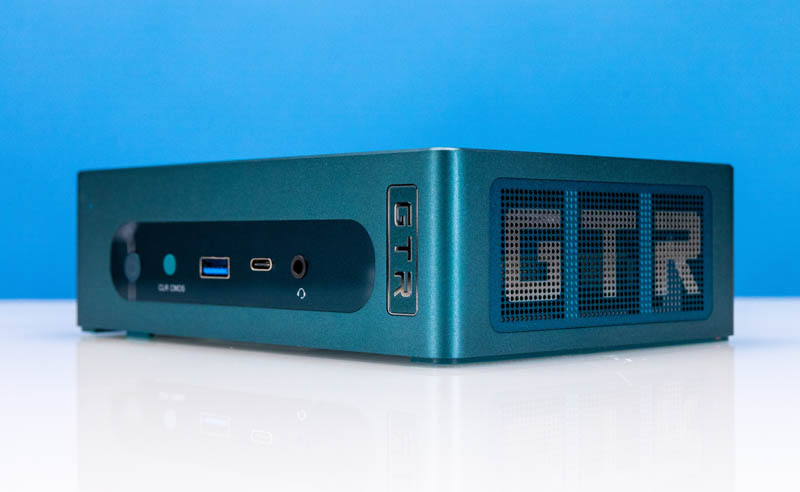
The Beelink GTR7 came configured with 32GB of DDR5 memory, a 1TB NVMe SSD, and WiFi 6. Since this is the GTR7, we get the AMD Ryzen 7 7840HS. The GTR7 Pro comes with the Ryzen 9 7940HS.
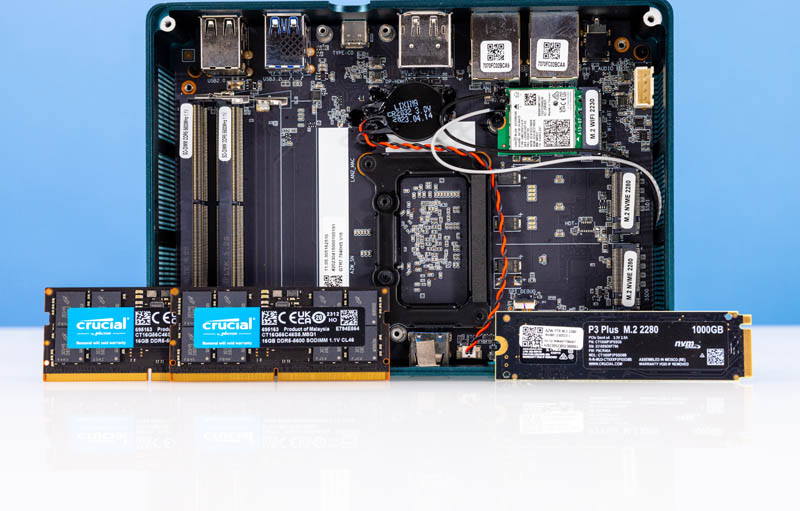
We also had Windows 11 Pro pre-installed. We did not re-install Windows 11 Pro, but our guess is that the experience would be more like what we saw with the Beelink EQ12 Pro instead of like what we see with 1L PCs from Lenovo, HP, and Dell as part of our Project TinyMiniMicro series.
Beelink GTR7 External Hardware Overview
On the front of the system, we get something that is very Beelink GTR. There is a power button, a clear CMOS button, a USB Type-A, and Type-C port, as well as a headset combo jack.
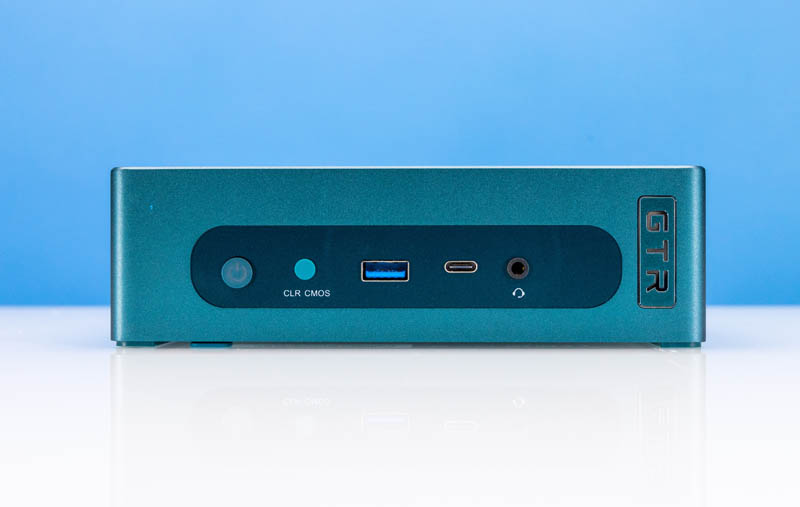
At this point, we should mention the color. This is the “Green” option but there are also Dark Blue, Space Grey, and Hermes Orange options. We skipped blue because we use a blue background for photos. You can see Space Grey and Hermes Orange make quick B-Roll cameos in the video.
Those colors are part of an overall re-design for the system. Instead of various fabric top colors (GTR6), or light-up AMD logos (GTR5), the color of the system is found throughout, including some big GTR7 branding.
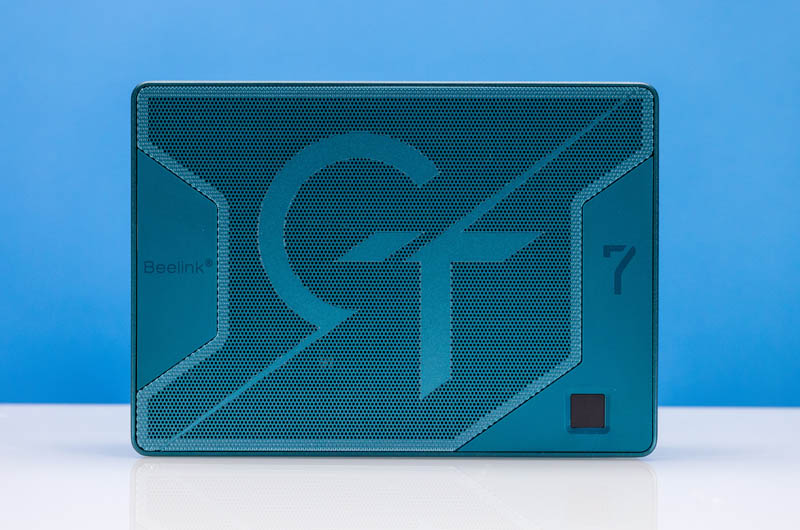
The top fingerprint reader is a nice option for those that have these sitting on their desks. One small challenge we saw was that when we were demoing the Thunderbolt 3/ USB4 with an eGPU dock in the video, this fingerprint reader stopped working. It started working again once the eGPU enclosure was removed.
On the sides, we get more GTR branding and vents. Our readers may be able to tell at this point, but the new system is noticeably taller than previous generations. Beelink has a similar footprint but the height is now 1.92 inches or around 48.77mm. The GTR5 is around 1.5 inches tall or 39mm. The GTR6 is 1.69 inches or around 42.93mm. The extra height seems to be used for better cooling, which helps a lot with the performance and noise of this unit.
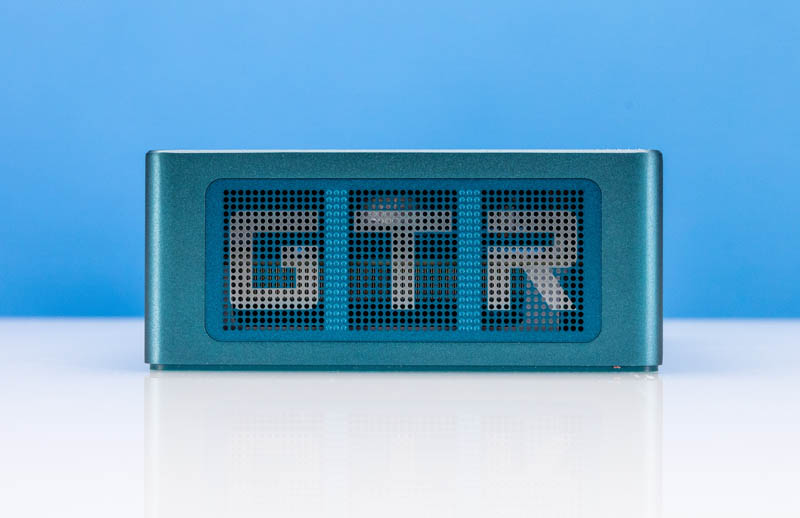
While the front of the system looks similar to the previous generations, the rear of the system takes the best from the GTR5 and GTR6 and then adds its own flavor. We get four USB Type-A ports. Two are USB 2 ports and two are USB 3.2 Gen 2 10Gbps ports. The Type-C ports are USB4/ Thunderbolt3 ports, and we show them running with an eGPU in the video. They can also provide a DisplayPort output meaning we can run four displays with this system in addition to the HDMI and DisplayPort.
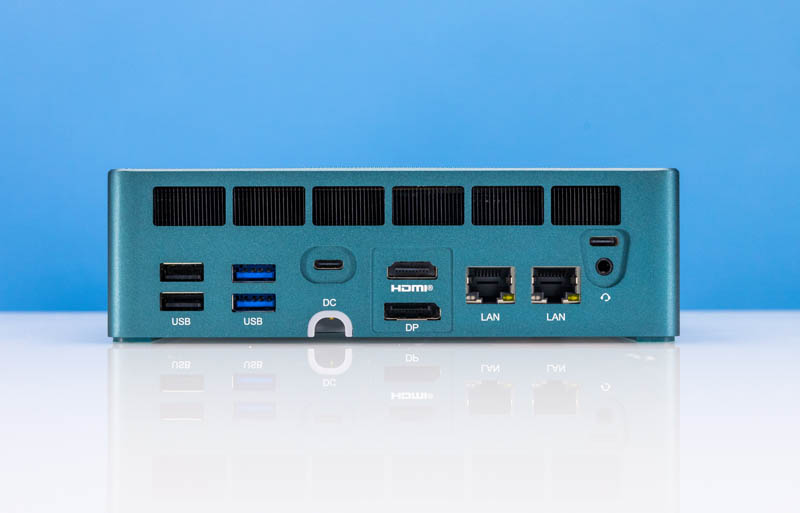
Another small feature is that we get a second audio combo jack on the rear of this system making this one of the only mini PCs we have tested with two audio jacks. Pairings to not stop with two 2.5GbE LAN ports. These are Intel i225-V B3 ports. It is a bit strange that launching in mid-2023 these are not using i226-V NICs instead.
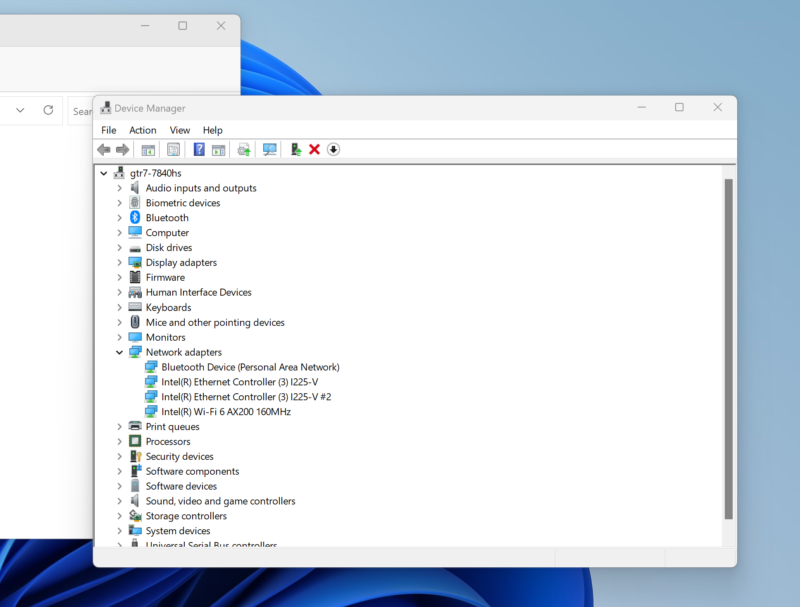
The bottom of the chassis carries over our green theme to the bottom panel, its pull tab, and the large rubber feet. The AMD Ryzen and Radeon branding has moved from a light-up advertisement on the top of the GTR5 to stickers on the bottom of the GTR7.
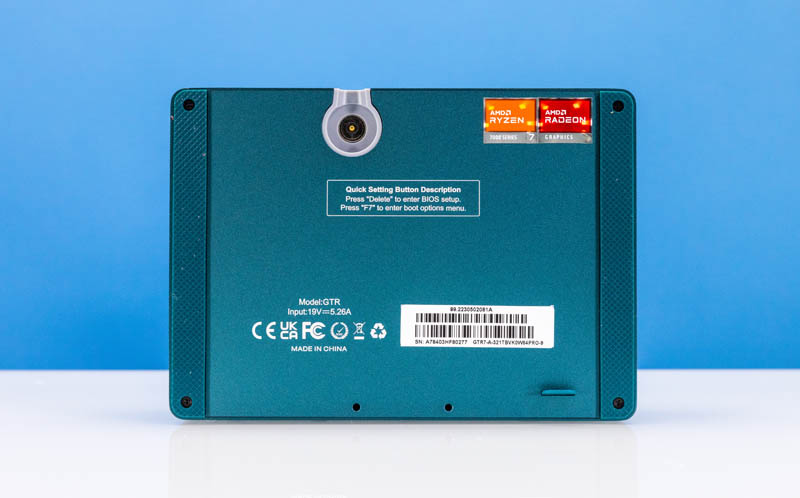
One feature that you may have noticed is the DC power input. The Beelink GTR7 has a bottom-mounted power input that uses a magnetic mating puck. We are not really sure why this is such a fancy design. Apple MagSafe is designed to disconnect when a lot of force is applied so that one does not pull a notebook off a surface by hitting a charging cable. This design does not do that because it is physically locked under the system. Instead, it seems to be a much more secure connection than the typical DC input, and perhaps that is the point.
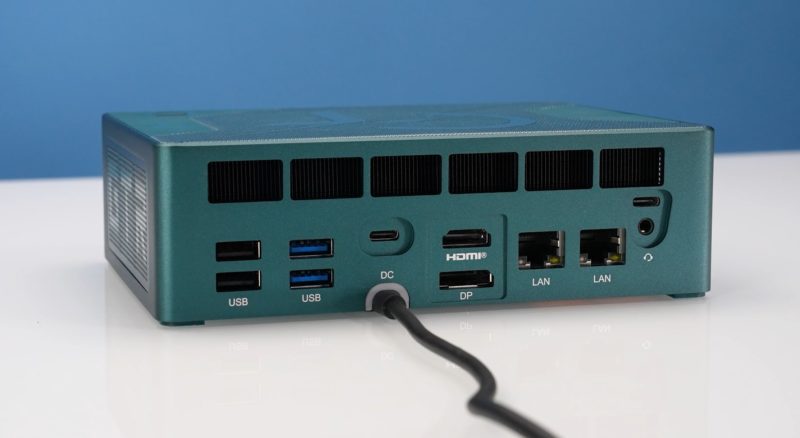
Next, let us get inside the system to see how it works.

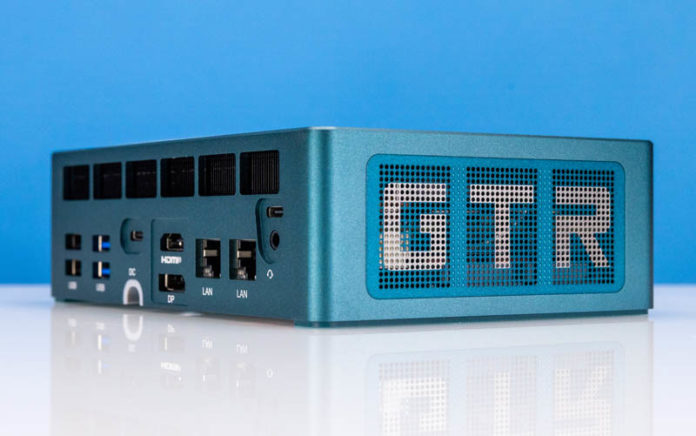



STH, while your TinyMiniMicro series has now achieved the legendary status, I’d really appreciate some clarity in your reviews around the support Beelink, Minisforum, and all others of these type of vendors provide. I personally went for Intel NUC. Most other -consumer- vendors hardly ship bios upgrade and the platform firmware upgrades are simply not existing. Issues like the i225/i226 disconnection have definitely improved iteration over iteration of newer drivers and firmware.
What was the trick to get the AMD drivers to work? I bought the PRO version to put in front of my TV for gaming and want to immediately reload this machine upon reception due to it coming from China and who knows what is all installed on this thing.
can someone make me clear why these day’s we still have usb 2.0 ports?
it is waste of space. just put usb 3.0 or 3.1 or 3.2. every version beyond usb 2.0 is better than usb. 2.0.
every OS supports booting from usb 3.x.
Erik, usb2.0 exists to connect keyboard and mouse.
Federico – it is nowhere near what Lenovo, HP, and Dell provide. You are right. On the other hand, you get more performance per dollar with these by a notable margin when the systems are at new pricing.
Churchill – See the EQ12 Pro video. You may want to see if you can grab the Windows 11 Pro key before re-installing it. Otherwise, you probably have to contact support. The basic VGA drivers and such worked out of the box. We tried installing the software via the installer and it worked after a reboot at some point.
erik – I think gdfsg hit that one perfectly. The USB 2 is there so you do not have to use USB 3 for keyboard and mouse.
It would still be good if you always have a section pointing out track records of updates/unpatched vulns across all your reviews as a subtle pressure on the manufacturers. These mini pcs are the most notorious but I’d imagine it’s relevant to discuss with even network/security vendors (unpatched vuln track record)
Looks cool, but why is there a CMOS clear button *right next* to the power button on the front?
I would *so* bump or mistakenly press that… It’s not often used, it should be inside.
I have both Minis Forum and Beelink mini-PC’s and the support for the most part is by web forum or email. Issues usually only come up when you push these little boxes out of their niche. (Windows/Gaming/general desktop)
Minis Forum has encouraged people to install Linux and post their results so all can see. I typically run Proxmox on them and you have to make some boot adjustments becuase Proxmox isn’t really about the latest and greatest video drivers. Some Linux flavors work great, some don’t. Let the buyer decide essentially.
VMWare 7.x with the Fling Pack works fairly well on these too and has been very, very stable.
The area that gets the least amount of feedback on these is the use of Thunderbolt and the USB4 port. Everyone wants to know if their legacy Thunderbolt device will work on that port. And for the life of me I can’t understand anyone who would plug in a $1000 GPU in a TB dock and then chicken choke it through Thunderbolt.
What about thermals under load especially ddr5? Some reviews point to 90+ degrees on the ddr5. Also, the cpu seems to throttle. You can tell that by looking at 3d mark results on other reviews. The cpu frequency is not steady on the last portion of the test.
THN – We did not see this. Just for some sense, I logged into the system remotely right now, at ~25% workload and the DDR5 has been sitting at 37-39.5C.
We will try to reproduce it with the GTR7 Pro. The Minisforum UM690 Pro throttled so badly during even LoL testing that the framerates dropped well below other machines with the same CPU. That did not happen on the GTR7. I would check if anyone claiming 90C+ memory on these also saw it on the UM690 Pro since that does not have a bottom fan like this does.
The CPU “throttled” only from a 5.1GHz to 4.7GHz even under 100% load to keep the system under 100W.
Could someone please explain why USB 2.0 ports are still used today?
It’s a waste of room. just insert a USB 3.0, 3.1, or 3.2. Every version of USB after 2.0 is superior than USB. 2.0.
There’s a comment and answer on USB2 already. It’s for kbd/mouse
@Churchill, i always put a fresh Lonux installation on all machines to make sure no American can listen in. No American can be trusted, and as soon as a Chinese company makes decent machines I will get rid of all thins American
This “Mobile” BGA Packaged APU has been allotted a 65W cTDP which is the same wattage as AMD’s “Desktop” G series Socket Packaged APUs and really there’s no difference in the silicon utilized in the Ryzen APUs, Mobile BGA Packaged or Desktop Socket Packaged APUs but that cTDP mostly.
And ETA Prime reviewed this SKU and was able to up the cTDP in the BIOS to 75W for gaming but this SKU is not processor upgradable like the ASRock Desk Mini(STX MB) or an InWin Chopin(Mini-ITX MB) based! And AMD has not been as DIY friendly there since AMD released its Ryzen 4000G but as OEM Only. And I purchased an ASRock X300/AM4 Desk Mini that came out of the box with Ryzen 4000G support in the BIOS expecting that I would be able to get a consumer Non Pro Ryzen 4000G variant only to find out that Ryzen 4000G was OEM only and in the Pro Branded form there that’s OEM and not consumer DIY. And it was not until Ryzen 5000G arrived that AMD actually made some Ryzen 4000G SKUs available for Processor in box DIY friendly availability and Ryzen 5000G was made OEM only for its first 3 months of availability until being offered to the DIY system builder consumer market,
So really I’m now wondering if AMD’s Socket based line of Desktop APUs are ever going to be updated beyond that Ryzen 5000G/Vega 8CU integrated graphics on the AM4 platform as AMD’s not released any Ryzen 6000G(Zen-3+/RDNA2 12CU) or Ryzen 7000G(Zen-4/RDNA3 12CU) based Desktop APUs in socket packaging there for AM5.
And I do hope that Intel with its Meteor Lake offerings will at least offer some Socket Packaged Meteor Lake variants and Intel’s well capable of socket packaging any mobile APU as I’m still using an HP Probook(4540s) with an Ivy Bridge generation core i7 3632QM processor that’s Socket Packaged and can get replaced or upgraded there on that good old fashioned workhorse HP Probook laptop.
But AMD’s increasingly becoming DIY end user unfriendly and appears to want to cater to OEM’s more and consumer DIY less and that’s Bad news there for folks Building InWin Chopin based systems where even though that takes a Mini-ITX MB the Chopin lacks the room for a Discrete GPU so really needs a Desktop APU for the Integrated Graphics and the ASRock Desk Mini uses an STX MB form factor there so needs G series Desktop APUs, or the Intel equivalents.
And really I’m very much hoping that Intel will release some Meteor Lake socket packaged SKUs for InWin Chopin and ASRock Desk Mini DIY system builders(Desktop APUs/SOCs in Socket Packed form with powerful integrated graphics) as otherwise AMD’s not going to be motivated to move beyond only offering Ryzen 5000G/Vega 8CU iGPU on the AM4 platform that’s 2 generations old for Integrated graphics(Vega). If Meteor Lake is only available in BGA packaging then AMD’s got not much motivation there to respond for lack of competitive pressures to offer any yearly Desktop G series APU update cadence and Vega 8CU iGPUs still compete well against any current Intel 96EU based integrated graphics.
My experience with Beelink was less than stellar. I purchased a GTR 7 Pro version and after hassling with tech non-support for over a week, I gave up and sent it back. One problem was no video output on one HDMI and tech support asked me to take a screengrab/photo of the blank screen….really? We played the 20 questions routine and then they wanted me to purchase new video cable, new memory and storage – to test with. What? It came with memory and storage installed from them. Yeah – not a good experience at all.
They are not worth the hassle. Went with two mini’s from Minisforum. Tech support was needed for a UUID conflict with Synology NAS backups. They responded quickly with a software tool to modify the UUID in the BIOS and that solved the problem. Both systems running great and I have Win11 on one and Win10 on the second.
How does this perform when compared to an M2 Pro Mac Mini?
Can it fit double sided nvme’s pr only single sided?